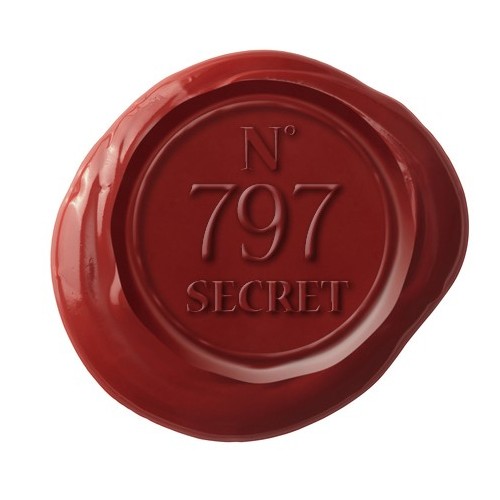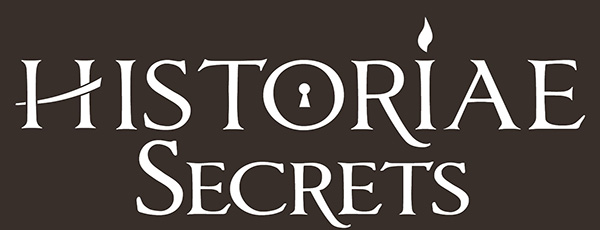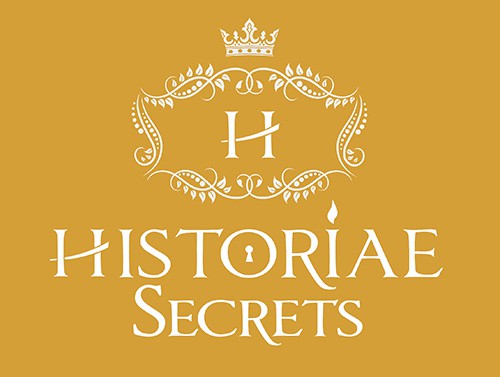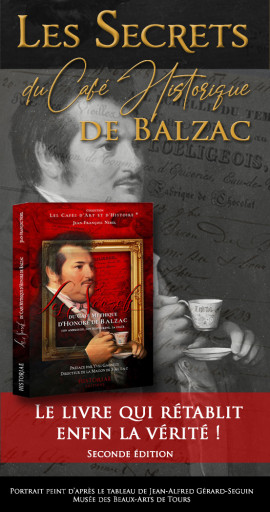
N° 797
The Magic Formula of Balzac's Legendary Coffee
That day, Balzac celebrated his fortieth birthday and the publication of his ‘Treatise on Modern Stimulants’, in which he dedicated a chapter to coffee, his ambrosia, which he had consumed in enormous quantities for almost twenty years.
His bills were accumulating, but all his energy was devoted to his work and literary glory.
Balzac was a geniu...
That day, Balzac celebrated his fortieth birthday and the publication of his ‘Treatise on Modern Stimulants’, in which he dedicated a chapter to coffee, his ambrosia, which he had consumed in enormous quantities for almost twenty years.
His bills were accumulating, but all his energy was devoted to his work and literary glory.
Balzac was a genius who, each night, following a flawless ritual, appealed to the 'coffee-inspiration, made according to the formula' to come to the rescue of his genius, like a shaman appealing to the spirits.
For Balzac, coffee was much more than a stimulant: it was the elixir of his inspiration, without which, he wrote several times, he was not able to create.
The Original Formula for Balzac's coffee
History has kept in mind that those who had the privilege of being invited to the coffee ceremony, presided over by Balzac, tenderly cherished the memory ever after.
Balzac was not only an immoderate consumer of coffee; he was also a conversant gastronome and an enlightened connoisseur of coffee. His correspondence reveals myriad references to his attachment to 'good coffee'.
If Balzac's consumption was quite eclectic, his preferences were inclined to a blend of colours. The most commonly cited source is the biography of Léon Gozlan, entitled Balzac in slippers (Balzac en pantoufles): 'the coffee was composed of three kinds of bean - Bourbon, Martinique and Mocha.' Edmond Werdet, who was Balzac's sole editor for almost two years, described the coffees from which Balzac's coffee was composed.
The above biographical citations are supported by several invoices conserved in the Lovenjoul collection, notably a summary invoice from 1832 which covered a period of eight months, payable to M. Le Baron de Balzac, which makes frequent mention of the purchase of coffee of Martinique, Mocha and Bourbon varieties.
But what was the proportion of each coffee in Balzac's blend?
Balzac's blend assertively spanned the nineteenth century. Many were the works that sang its praises. In 1828, the 'Gourmand Code', published by his friend Raisson, recommended a blend composed of one part 'Green Martinique', one part Bourbon and one part Mocha. In the same period, the 'French Gastronome', which Balzac printed, supported the same recommendation: 'after conducting our own experiments in hundreds of ways, we have ultimately settled on the following method, that we are presenting as official. We roast separately (and ourselves) one part 'Green Martinique', one part Bourbon and one part Mocha.' In 1846, the Coffee Amateur's Manual, which established itself as a reference in regard to coffee, recommended the blend of these three same coffees in the same proportions.
Balzac's coffee : his magic potion
During the composition of the Human Comedy, Balzac would have ingested in total:
- between 17 and 25 cups per day
- a cup every 17 minutes during his nights of work
- a packet of 250 g of coffee every day
- between 60 and 90 kilogramms per year
- between 162 000 and 243 000 cups
- between 19 000 and 29 000 liters of infused coffee
- between 1,6 and 2,5 tonnes of coffee beans
- between 21,4 and 40,7 kg of cafeine
For each work he wrote, Balzac consumed on average: 251 litres of coffee, which equals 2090 cups, or 86 250g packets.
Balzac's average annual consumption was:
- 20 to 30 times higher than a Parisian's average consumption in 1847
- 10 to 15 times higher than a Frenchman's average consumption in 2015
Bibliography
[1] GAUTIER, Théophile. Honoré de BALZAC,: sa vie et ses œuvres. Edition revue et augmentée. Paris : Poulet-Malassis et de Broise, 1859, p. 58.[2] PIERROT, Roger. Lettres à Madame Hanska, 1845-1850. Paris : Robert Laffont, 1990, pp. 44-45.
[3] WERDET Edmond. Portrait intime de Balzac: sa vie, son humeur et son caractère. Paris : E. Dentu, 1859, p. 349.
[4] Facture de LOBLIGEOIS, LOV A. 340 fol. 71
[5] RAISSON, Horace. Code Gourmand, manuel complet de gastronomie. Quatrième édition. Paris : J.-P. Roret, 1829, p. 153.
[6] GRIMOD DE LA REYNIERE, ? Alexandre-Balthazar-Laurent ; GASSICOURT, Charles-Louis Cadet de. Le gastronome français, ou, L'art de bien vivre. Paris : Charles-Besset, 1828, p. 435.
[7] DAUSSE Amans. Manuel de l'amateur du café; ou l'art de torréfier les cafés convenablement. Paris : chez l’auteur, 1846, p. 43.
Produits associés au Secret "The Magic Formula of Balzac's Legendary Coffee"
-
Les Secrets du Café Mythique d'Honoré de Balzac Les Secrets du Café Mythique d'Honoré de Balzac
History Book Préface de Yves GagneuxDirecteur de la Maison de Balzac Paris, 20 Mai 1839 - Parution du Traité des Excitants Modernes Figure emblématique de la littérature française, Honoré Balzac est également resté dans l’Histoire comme le consommateur français de café le plus mythique. Si sa passion pour le café était absolue, elle n’en a pas moins... History Book Préface de Yves GagneuxDirecteur de la Maison de Balzac Paris, 20 Mai 1839 - Parution du Traité des...
Online onlyNot available -
Historical Coffee Blend, « Honoré de Balzac, Paris 1839 » Historical Coffee Blend, « Honoré de Balzac, Paris 1839 »
Historical Coffee Blend - Original Recipe Paris, 20 Mai 1839The Historical Coffee Blend «Honoré de Balzac, Paris 1839» is the celebrated coffee of Balzac, consumed in May of 1839, when Traité des Excitants Modernes was published.The authentic coffee of Honoré de Balzac, roasted in the old way according to the traditions of the day. Historical Coffee Blend - Original Recipe Paris, 20 Mai 1839The Historical Coffee Blend «Honoré de Balzac, Paris...
Chercher par thème
-
HUNT FOR Replicas and Objects of History
-
The "Historical Figures" Collection
-
Objects of History of Great Writers
- Objects and Products of History of Honoré de BALZAC
- Objects of History of MARCEL PROUST
- Objects and Products of History of ALEXANDRE DUMAS PÈRE
- Objects and Products of History of ARTHUR RIMBAUD
- Objects and Products of History of VICTOR HUGO
- Objects and Products of History of GUY DE MAUPASSANT
- Objects and Products of History of OSCAR WILDE
- Objects and Products of History of CHARLES BAUDELAIRE
- Objects and Products of History of JULES VERNE
- Objects and Products of History of GUSTAVE FLAUBERT
- Objets et Produits d'Histoire de JEAN COCTEAU
- Objets et Produits d'Histoire de CHAROTTE BRONTE
- Objets et Produits d'Histoire de LEWIS CAROLL
- Objects and Products of History of MOLIERE
-
Objects of History of Great Painters
- Objects and Products of History of ELISABETH VIGÉE LEBRUN
- Objects and Products of History of FRANÇOIS GÉRARD
- Objects and Products of History of CLAUDE MONET
- Objects and Products of History of HECTOR VIGER
- Objects and Products of History of MARTIN VAN MEYTENS
- Objects and Products of History of FRANZ XAVIER WINTERHALTER
- Objects and Products of History of VINCENT VAN GOGH
- Objects of History of Princes, Kings & Emperors
-
Objects of History of Princesses, Queens & Empresses
- Objects and Products of History of MARIE-ANTOINETTE
- Objects and Products of History of JOSÉPHINE DE BEAUHARNAIS
- Objects and Products of History of EMPRESS EUGÉNIE
- Objects and Products of History of ELISE DE BEAUHARNAIS
- Objects and Products of History of LAETITIA BONAPARTE
- Objects and Products of History of HORTENSE DE BEAUHARNAIS
- Objects and Products of History of PAULINE BONAPARTE
- Objects and Products of History of the COUNTESS OF PRESLE
- Objects and Products of History of Marquise of CAUMONT
- Objects and Products of History of Madame Elisabeth
- Objects and Products of History of ELEONORE VERGEOT
- Objects of History of Great Photographers
- Objects of History of Great Perfumers
- Objects of History of Immortal Artists
- Objects of History of Great Gastronomes
- Objects of History of Great Scientists
- Objects of History of Great Gardeners
-
Objects of History of Great Writers
- The "Arts and Crafts of History" Collection
- The "Famous Houses and Historical Shops" Collection
- The "Ancient and Always Existing Brands" Collection
-
The "Historical Figures" Collection
-
HUNT AFTER Hidden Secrets of History
-
Secrets of GREAT WRITERS
- Secrets of Honoré de Balzac
- Secrets of Marcel Proust
- Secrets of Alexandre Dumas Père
- Secrets of Arthur Rimbaud
- Secrets of Vicotr Hugo
- Secrets of Guy de Maupassant
- Secrets of Oscar Wilde
- Secrets of Charles Baudelaire
- Secrets of Jules Vernes
- Secrets of Jean Cocteau
- Secrets of Gustave Flaubert
- Secrets of Lewis Caroll
- Secrets of Charlotte Brontë
- Secrets of Molière
- Secrets of GREAT PAINTERS
- Secrets of PRINCES, KINGS & EMPERORS
-
Secrets of PRINCESSES, QUEENS & EMPRESSES
- Secrets of Marie-Antoinette
- Secrets of Joséphine de Beauharnais
- Secrets of Empress Eugénie
- Secrets of Elise de Beauharnais
- Secrets of Laetitia Bonaparte
- Secrets of Hortense de Beauharnais
- Secrets of Pauline Bonaparte
- Secrets of Eléonore de Vergeot
- Secrets of the Countess of Presle
- Secrets of Madame Elisabeth
- Secrets of the Marquise de Caumont
- Secrets of GREAT PHOTOGRAPHERS
- Secrets of GREAT PERFUMERS
- Secrets of IMMORTAL ARTISTS
- Secrets of GREAT GASTRONOMES
- Secrets of GREAT SCIENTISTS
- Secrets of Great Gardeners
-
Secrets of GREAT WRITERS
- HUNT AROUND Hidden and Famous Places of History
Wishlist
Top sellers
-

Jardin le Nôtre - Eau de Parfum
Reinterpreted Perfume Of History In order to celebrate the fourth...
10,00€ -

Bouquet du Trianon - Eau de Toilette
Reinterpreted Perfume Of History Versailles, 15th of August 1774 Art...
59,00€ -

Orangerie du Roy - Eau de Toilette
reinterpreted Perfumes of History Versailles, September 1rst 1689...
59,00€ -

Rose de France - Perfumed Soap
reinterpreted Scents of History Rose de France plunges us into the...
6,50€






